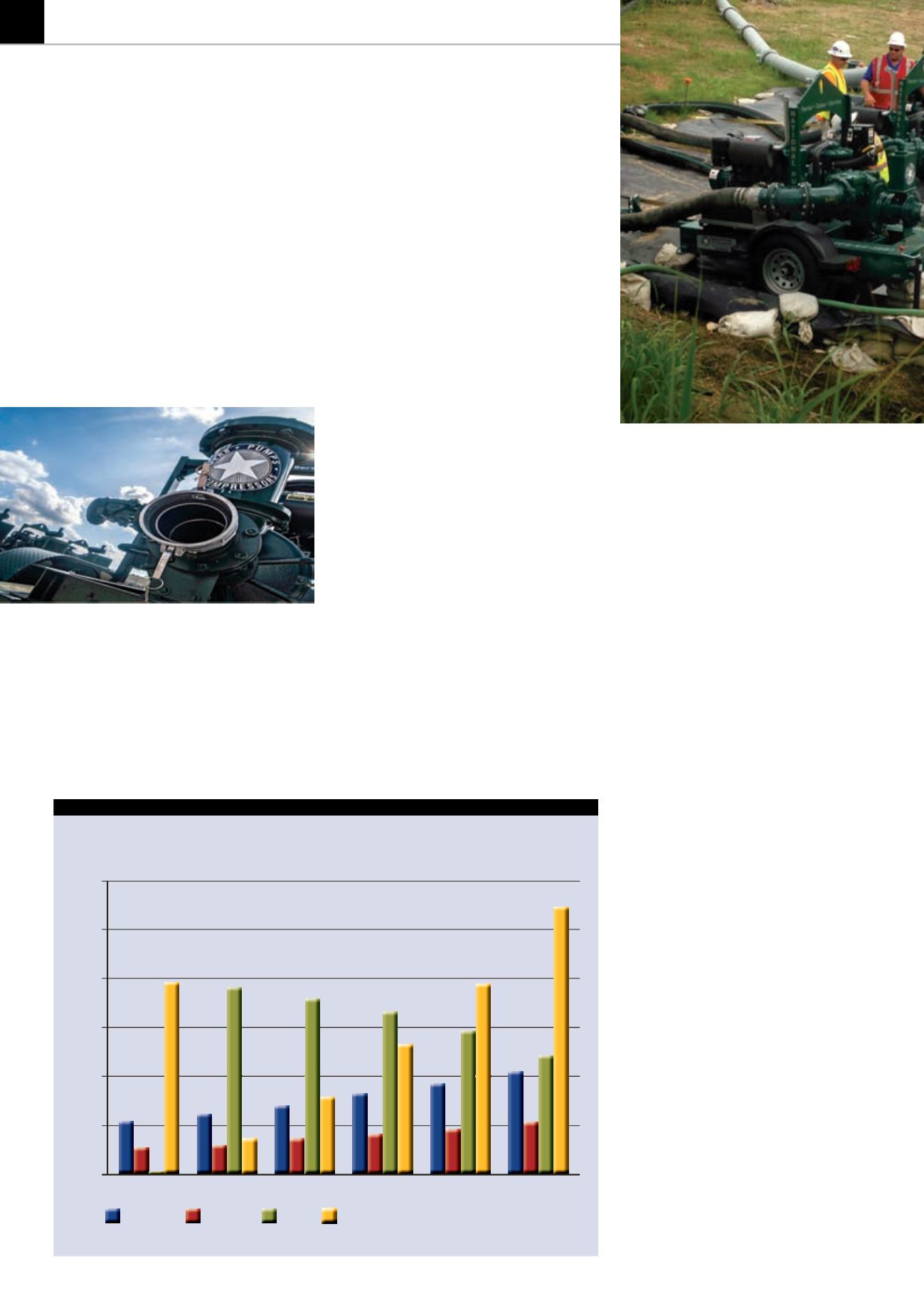
58
FINANCEREPORTUNITEDACQUISITION
IRNAPRIL-MAY 2014
National Pump - estimatedgrowth
Agooddeal?
U
nited’s press release on the National Pump
acquisitionusedcarefullychosenwords. The
first sentence focused on “financial returns
throughout the cycle” which shows a desire for
United not to be seen as a cyclical rental company
tied to the peaks and troughs of construction.
Fifty percent of National’s revenue comes from
the energy sector. National Pump was founded in
2007, and United Rentals was happy to report it has
grown at over 50% per year since 2010. United’s
ownbusiness is growing at around6 to 7% a year.
In the ‘Private Equity Wakes Up’ article in
IRN’s
February 2014 issue, nearly all the recent private
equity acquisition analyses disclosed very little
information, sometimes not even the acquisition
value. As United Rentals’ shares are traded on the
New York Stock Exchange it hasmany investors and
has tomaintain its credibility with these owners. It
has also had its own ups and downs in the past: in
2008 it famously wrote off more than US$1 billion
in acquisition goodwill. This makes both United
and its shareholders wary of overpaying for rental
company acquisitions.
Valuationmethods
The enterprise valuation method makes it easy
to compare different rental companies with
different depreciation policies and debt levels.
Most other valuation methods focus on profit, but
in rental businesses profit is heavily influenced by
depreciation policy and the replacement cycle for
rental fleet.
A company is more valuable the higher its
cashflow, provided it can handle its debt. The
enterprise value of a company is a multiple of the
operating cash flow (Earnings Before Interest Tax
Depreciation Amortisation or EBITDA). The price to
acquire a company is usually the enterprise value
minus its debt. The equipment lease portion of a
company’s debt usually continues with the new
owner.
EBITDA multiples range from perhaps three
to nine, depending on the growth rate and cash
generation capacity of the company, its market
position and desirability, and the certainty of its
growth and cashflow.
In good times, before the 2008 financial crisis,
many acquisitions of rental companies seemed to
average six times EBITDA minus debt. Why six and
not four, or eight?
The banks seemed to be able to handle four times
EBITDA as the loan to acquire the company, so an
equity investor could buy a business using this loan
plus another two times EBITDA. This worked fine as
longasdebtwasavailable, and the companies could
profitably, reliably 'outgrow their debt' withgrowing
cashflow.
National financials
Unusually in this case, United has given
information, includingNational Pump’s2013 revenue
($211 million), historical growth (50% per year
from 2010 to 2013), EBITDA at 49% of revenue,
and even the relationship between rental revenue
and equipment original cost (dollar or financial
utilisation at 80%). Very unusually, United has
said it has “plans to double the size of the pump
business in five years.”
If we project the value of the acquired company
on today’s profitability, dollar (financial) utilisation,
at the “double in five years” growth rate, which is
around 15% compound per year, we can try to see if
the companywill grow in value (see graphon left).
The answer is yes, mostly because the financial
United Rentals has acquiredUS rental companyNational
Pump &Compressor for a price of US$780million,
equivalent to 3.7 times National’s 2013 revenues.
Was it a good deal, andwhat does the pricemean
for the industry? Jeff Eisenberg reports.
SOURCES: 2013 figures fromUnitedRental’s press release, 2014 and later estimates by the author.
1200
1000
800
600
400
200
0
Revenue
EBITDA Debt
Valuation net of Debt
2013
2014
2015
2016
2017
2018
ANational Pump trench bypass project. The company
has 35 locations, including four in Canada.


